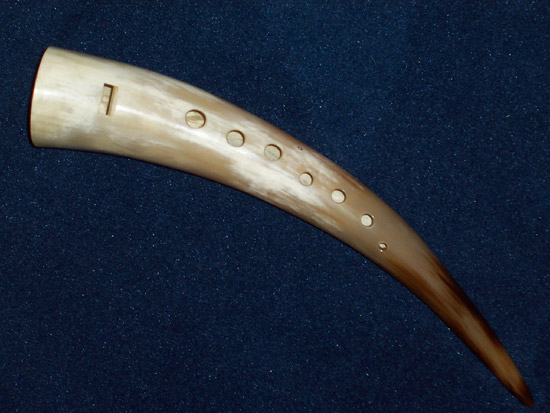Music: Instruments and Ensembles
Gemshorn
A medieval flute with a fipple mouthpiece and a resonant cavity akin to that of an ocarina, the gemshorn is traditionally made from the horn of an ox or chamois (Gämse in German, gems in Dutch—hence the instrument’s name). Used in German pastoral areas in the 15th century, the wide end of the gemshorn is plugged with a material such as wood, creating an air duct that a player blows into; finger holes allow diatonic pitches in usually a one-octave range.
Bandoneon
Often used in Bavarian folk music along with the fiddle, the bandoneon developed from the concertina in the late 19th century. Although Heinrich Band invented and manufactured the bandoneon in Germany, the instrument became an essential part of Argentine tango. Both types are played using bellows and buttons; however, the Argentinian bandoneon is different from the German instrument, which evolved into a chromatic model with two reed banks and anywhere from 64 to 220 notes.
Museum of Musical Instruments at the University of Leipzig
Located in the Grassi Museum, the Museum für Musikinstrumente der Universität Leipzig(Museum of Musical Instruments at the University of Leipzig) is one of the largest European musical instrument museums. It contains over 10,000 objects from the Renaissance and Baroque periods, including wind and percussion instruments and piano rolls. The museum features relics from Bach’s Leipzig period as well as a sound laboratory for testing instruments.
Article written for World Trade Press by Jen Shipon.
Copyright © 1993—2025 World Trade Press. All rights reserved.

 Germany
Germany 
